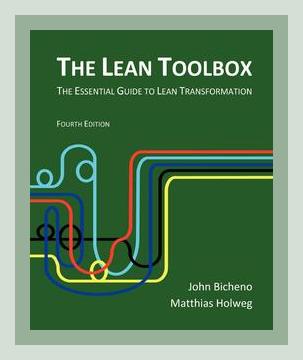Operations and Supply Chain ManagementProcess Improvement
**
Introduction
“The Lean Toolbox” by John Bicheno and Matthias Holweg is a comprehensive guide designed to aid in Lean transformation processes. It amalgamates tools, principles, and practical case studies to offer a deep understanding of Lean methodology, which focuses on minimizing waste while maximizing value in various processes. This summary distills the core concepts and practical actions derived from the book, structured around its primary themes: Lean Principles, Value Stream Mapping, Waste Elimination, Continuous Improvement, Lean Culture, and Lean Tools.
1. Lean Principles
Core Idea:
Lean principles are built on five foundational concepts: specifying value, identifying the value stream, creating flow, establishing pull, and seeking perfection.
Example:
The book offers Toyota’s production system as a prime example of the successful application of these principles. Toyota focuses extensively on eliminating waste and ensuring that value is added at every stage of the process.
Actionable Step:
Identify a key product or service in your organization. Break down the process into steps and categorize each step as either value-adding or non-value-adding. Aim to eliminate or alter non-value-adding steps.
2. Value Stream Mapping (VSM)
Core Idea:
VSM is the cornerstone of Lean transformation, involving detailed mapping of all steps in a process to visualize material and information flows.
Example:
An example from the book illustrates a manufacturing process where mapping revealed bottlenecks in procurement and delays in quality checks. By addressing these issues, throughput time was reduced by 30%.
Actionable Step:
Create a current-state value stream map for a specific product line. Identify areas of waste such as waiting times, excess inventory, and rework. Develop a future-state map with reduced waste and improved flow.
3. Waste Elimination (Muda)
Core Idea:
Lean methodology highlights seven types of waste (muda): overproduction, waiting, transporting, inappropriate processing, unnecessary inventory, unnecessary motion, and defects.
Example:
A case study in the book describes a company that tackled overproduction by implementing just-in-time (JIT) inventory controls, thereby reducing storage costs by 40%.
Actionable Step:
Conduct a waste walk (gemba walk) in your workplace to observe and identify specific instances of waste. Prioritize one type of waste to eliminate or reduce, using Lean tools and techniques.
4. Continuous Improvement (Kaizen)
Core Idea:
Continuous improvement, or Kaizen, focuses on small, incremental changes that collectively lead to significant enhancements over time.
Example:
The book details a hospital that used Kaizen events to streamline patient check-in processes, resulting in a 25% reduction in waiting times.
Actionable Step:
Organize a Kaizen event with a cross-functional team. Focus on a particular process problem, brainstorm solutions, implement changes, and review the impact over a set period.
5. Lean Culture
Core Idea:
Creating a Lean culture requires engaging and empowering all employees, promoting a mindset of continuous improvement, respect, and collaboration.
Example:
The authors recount how a manufacturing company fostered a Lean culture by establishing a suggestion system where employees could submit improvement ideas. They received over 1,000 suggestions in the first year, with many implemented successfully.
Actionable Step:
Implement an idea submission system in your organization. Encourage employees at all levels to contribute suggestions for process improvements, and recognize and reward valuable ideas.
6. Lean Tools and Techniques
Core Idea:
The toolbox metaphor describes the wide array of Lean tools available, such as 5S, Kanban, Poka-Yoke, SMED, and more.
Example:
An example in the book shows the use of 5S (Sort, Set in order, Shine, Standardize, Sustain) to organize a warehouse. This led to a 60% reduction in time spent locating items and a 50% reduction in workplace accidents.
Actionable Steps for Selected Tools:
- 5S:
- Sort: Eliminate unnecessary items from the workspace.
- Set in Order: Arrange tools and materials for ease of use.
- Shine: Clean the work area to maintain standards.
- Standardize: Develop protocols to keep the area organized.
-
Sustain: Regular audits to ensure compliance with 5S practices.
-
Kanban:
- Implement a Kanban board to visualize workflow.
-
Limit work in progress (WIP) to prevent bottlenecks.
-
Poka-Yoke (Error Proofing):
- Identify common errors in a process.
-
Design mechanisms or checks to prevent mistakes (e.g., a color-coded system for parts assembly).
-
SMED (Single-Minute Exchange of Die):
- Analyze the steps involved in equipment setup.
- Separate internal and external tasks, improving setups from hours to minutes.
Conclusion
In summary, “The Lean Toolbox” provides a robust framework for Lean transformation, rich with practical examples and actionable steps. Adhering to Lean principles, employing value stream mapping, relentlessly eliminating waste, fostering a culture of continuous improvement, and utilizing Lean tools collectively lead to significant process improvements and organizational efficiencies. By implementing the actionable steps prescribed, organizations can begin their journey towards Lean excellence, achieving greater productivity, reduced waste, and enhanced value for customers.
